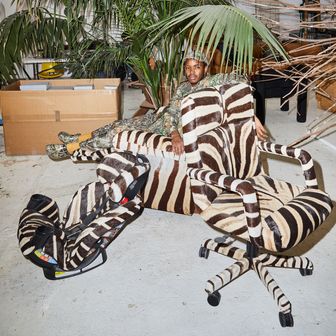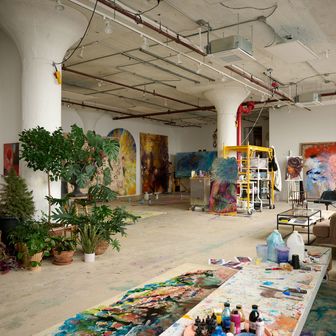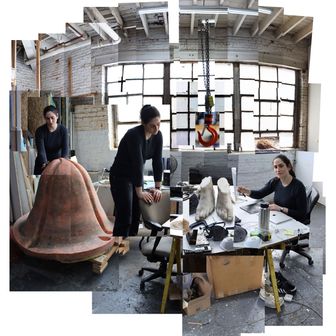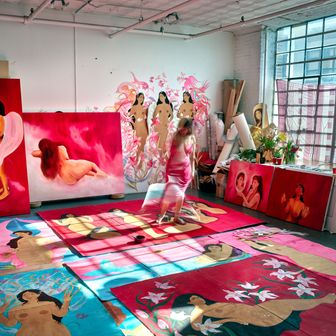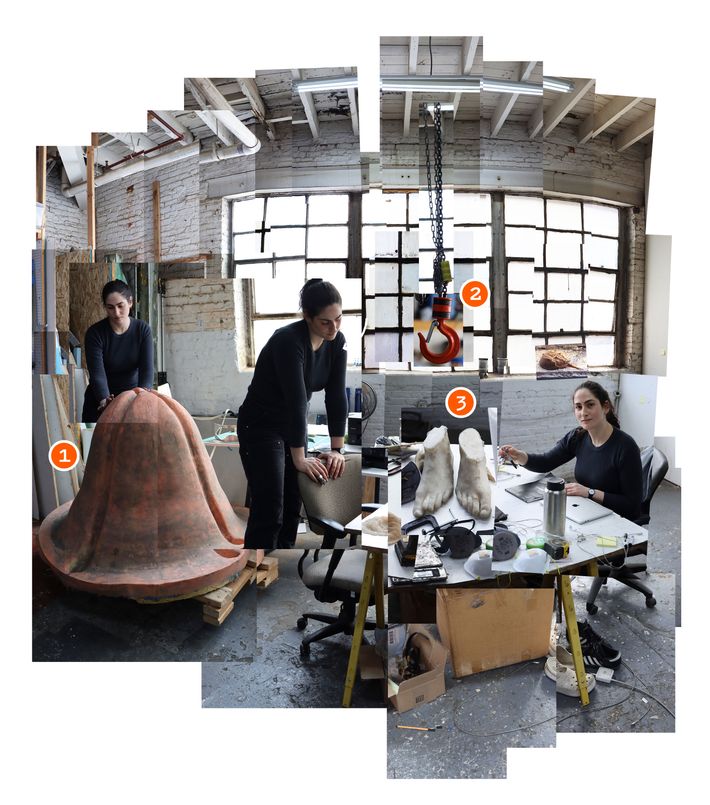
Sculptor Hannah Levy’s mother was an architect, and perhaps because of this, “I was always interested in design and the way that we interact with objects that we are most familiar with,” she says.
Not that you would find her welded organic sculptures entirely familiar. Some of her work is influenced by architects like Hector Guimard, who is probably best known for his Art Nouveau entrances to the Paris Métro. “I really like playing with the interaction of two materials and how something soft might mate with or resist something hard,” she says.
Design Hunting
Art Studios Week
Wendy Goodman visits four studios in four neighborhoods.
Levy grew up in Morningside Heights, then went to Cornell. In the summer of 2012, while she was an undergraduate, she learned welding at the Polich Tallix, a fine-art foundry in upstate Rock Tavern. “I think that for physically making things, you learn by doing,” she says. She then completed a postgraduate program in art at the Städelschule in Frankfurt, Germany, in 2015.
When she moved back to the city, she did her welding in a communal space in Brooklyn but also kept a studio in the South Bronx. In late 2018, which was also a big year of shows for her — in Düsseldorf, Dublin, Copenhagen, Shanghai, Brooklyn, Savannah, and Milwaukee — Levy moved into her current studio. Actually, it was a group project: She took over a floor of this building with ten friends, each carving out their own space. (Among her co-habitants for a while was Hugh Hayden.)
She expanded her portion of the floor in 2020 to 1,400 square feet. Now, she can work on different components of her sculptures in the same space, separated by a wall, which means that when she is welding metal, the dust can fly in one area while, in the other, the gooey silicone material she uses to make molds stays free of it. “It’s really exciting,” she says, “because now I have assistants who sand things for me a lot — I could never have somebody helping me sand and be working on the mold side of things at the same time.” It gave her more room to maneuver: “All of my previous work was modular, so you could take it apart and screw it back together, which makes sense for shipping, but it doesn’t all have to be modular now.”
In her latest show, “Crutch,” which closed April 29 at Casey Kaplan Gallery, “there were two pieces that have this caged glass in them,” Levy says, “and those are based on this device called the Hoyer lift, which is meant to lift people who are bedbound from one space to another.” Levy works with a glass artisan to produce elements of these sculptures. The polished bars with molded glass pieces you first encounter on walking in to her Casey Kaplan show were installed at the height of ballet bars, and again they reference “ADA bars that might exist in a bathroom or staircase,” she says. “I think that some designers think of as a hindrance rather than an opportunity for creativity, so it was fun to think of it as an opportunity.”
(1) Silicone Mold: “It is the size and shape of one of the pieces I showed in Venice last year but did not end up using.”
(2) Pulley: “I originally installed it while working on a series of chandelier sculptures.”
(3) Casts of Her Friend’s Feet: Used to design the shoe elements of her stilt sculptures.
(4) Bench Sander
(5) Drill-Press Machine
(6) Sculpture, Part One: The metal armature for a piece going to Art Basel. (7) Sculpture, Part Two: The “slumped glass” portion of the same piece.
More Great Rooms
- Just Follow the Red Door Through the Trees
- A Jubliantly Traditional Carnegie Hill Classic Six
- Object & Thing Goes to the Beach


